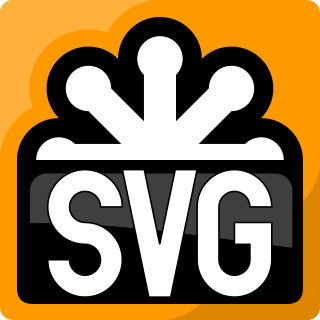A document type definition (DTD) is a set of markup declarations that define a document type for a SGML-family markup language.
DocBook is a semantic markup language for technical documentation. It was originally intended for writing technical documents related to computer hardware and software but it can be used for any other sort of documentation.
Mathematical Markup Language (MathML) is a mathematical markup language, an application of XML for describing mathematical notations and capturing both its structure and content. It aims at integrating mathematical formulae into World Wide Web pages and other documents. It is part of HTML5 and an ISO standard ISO/IEC DIS 40314 since 2015.
XSD, a recommendation of the World Wide Web Consortium (W3C), specifies how to formally describe the elements in an Extensible Markup Language (XML) document. It can be used by programmers to verify each piece of item content in a document. They can check if it adheres to the description of the element it is placed in.
In computing, RELAX NG is a schema language for XML—a RELAX NG schema specifies a pattern for the structure and content of an XML document. A RELAX NG schema is itself an XML document but RELAX NG also offers a popular compact, non-XML syntax. Compared to other XML schema languages RELAX NG is considered relatively simple.
Schematron is a rule-based validation language for making assertions about the presence or absence of patterns in XML trees. It is a structural schema language expressed in XML using a small number of elements and XPath.
XMLBeans is a Java-to-XML binding framework which is part of the Apache Software Foundation XML project.
GRDDL is a markup format for Gleaning Resource Descriptions from Dialects of Languages. It is a W3C Recommendation, and enables users to obtain RDF triples out of XML documents, including XHTML. The GRDDL specification shows examples using XSLT, however it was intended to be abstract enough to allow for other implementations as well. It became a Recommendation on September 11, 2007.
RDFa is a W3C Recommendation that adds a set of attribute-level extensions to HTML, XHTML and various XML-based document types for embedding rich metadata within Web documents. The RDF data-model mapping enables its use for embedding RDF subject-predicate-object expressions within XHTML documents. It also enables the extraction of RDF model triples by compliant user agents.
The Internationalization Tag Set (ITS) is a set of attributes and elements designed to provide internationalization and localization support in XML documents.
A QName, or qualified name, is the fully qualified name of an element, attribute, or identifier in an XML document. A QName concisely associates the URI of an XML namespace with the local name of an element, attribute, or identifier in that namespace. To make this association, the QName assigns the local name a prefix that corresponds to its namespace. In all, the QName comprises the URI of the XML namespace, the prefix, and the local name.
Namespace-based Validation Dispatching Language (NVDL) is an XML schema language for validating XML documents that integrate with multiple namespaces. It is an ISO/IEC standard, and it is Part 4 of the DSDL schema specification. Much of the work on NVDL is based on the older Namespace Routing Language.
eXtensible HyperText Markup Language (XHTML) is part of the family of XML markup languages. It mirrors or extends versions of the widely used HyperText Markup Language (HTML), the language in which Web pages are formulated.

Animation of Scalable Vector Graphics, an open XML-based standard vector graphics format, is possible through various means:
In computing, Facelets is an open-source Web template system under the Apache license and the default view handler technology for JavaServer Faces (JSF). The language requires valid input XML documents to work. Facelets supports all of the JSF UI components and focuses completely on building the JSF component tree, reflecting the view for a JSF application.
XHTML+RDFa is an extended version of the XHTML markup language for supporting RDF through a collection of attributes and processing rules in the form of well-formed XML documents. XHTML+RDFa is one of the techniques used to develop Semantic Web content by embedding rich semantic markup. Version 1.1 of the language is a superset of XHTML 1.1, integrating the attributes according to RDFa Core 1.1. In other words, it is an RDFa support through XHTML Modularization.
An XML External Entity attack is a type of attack against an application that parses XML input. This attack occurs when XML input containing a reference to an external entity is processed by a weakly configured XML parser. This attack may lead to the disclosure of confidential data, denial of service, server side request forgery, port scanning from the perspective of the machine where the parser is located, and other system impacts.